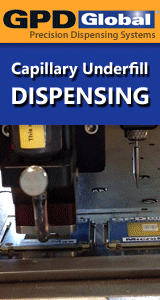Printed Circuit Board Assembly & PCB Design Forum
SMT electronics assembly manufacturing forum.
- SMTnet
- »
- Electronics Forum
- »
- Lead manufacturing to lead free transisition
Lead manufacturing to lead free transisition
Views: 4552
![]() Hi all,
What are some of the must do, cannot go with...
- Feb 21, 2007
by
Bill
Hi all,
What are some of the must do, cannot go with...
- Feb 21, 2007
by
Bill
![]()
![]()
![]() Hi, Bill,
Lead-free solder and paste manufacturers will b...
- Feb 21, 2007
by
robgd3
Hi, Bill,
Lead-free solder and paste manufacturers will b...
- Feb 21, 2007
by
robgd3
![]()
![]()
![]() Hi Larry,
Changing an oven because of Lead-dust ???
W...
- Feb 22, 2007
by
Hi Larry,
Changing an oven because of Lead-dust ???
W...
- Feb 22, 2007
by
![]()
![]() hahaha! LISTEN, everyone knows that oven get dirty. They n...
- Feb 27, 2007
by
WaveMasterLarry
hahaha! LISTEN, everyone knows that oven get dirty. They n...
- Feb 27, 2007
by
WaveMasterLarry
![]()
![]()
![]() Boy it is good to see the wave master back in action! I mea...
- Feb 27, 2007
by
RDR
Boy it is good to see the wave master back in action! I mea...
- Feb 27, 2007
by
RDR
![]()
![]()
![]() How's the weather over in Idaho, eh, Larry?
...
- Feb 27, 2007
by
Steve Thomas
How's the weather over in Idaho, eh, Larry?
...
- Feb 27, 2007
by
Steve Thomas
![]()
![]()
![]() Wow, how did you know?
...
- Feb 27, 2007
by
WaveMasterLarry
Wow, how did you know?
...
- Feb 27, 2007
by
WaveMasterLarry
![]()
![]()
![]() I don't know whether to laugh or cry.
...
- Feb 27, 2007
by
James
I don't know whether to laugh or cry.
...
- Feb 27, 2007
by
James
![]()
![]()
![]() WML
Excuse us for confusing things with facts, but lead vap...
- Feb 27, 2007
by
davef
WML
Excuse us for confusing things with facts, but lead vap...
- Feb 27, 2007
by
davef
![]()
![]()
![]() Hmmm.... I had Intel survey my process on a mixed alloy lin...
- Feb 27, 2007
by
Hmmm.... I had Intel survey my process on a mixed alloy lin...
- Feb 27, 2007
by
![]()
![]() you mean to tell us you actually know who larry is, Steve? ...
- Feb 28, 2007
by
Loco
you mean to tell us you actually know who larry is, Steve? ...
- Feb 28, 2007
by
Loco
![]()
![]()
![]() Let's talk pin holes and blow holes. I've been here since th...
- Mar 01, 2007
by
Let's talk pin holes and blow holes. I've been here since th...
- Mar 01, 2007
by
- SMTnet
- »
- Electronics Forum
- »
- Lead manufacturing to lead free transisition







